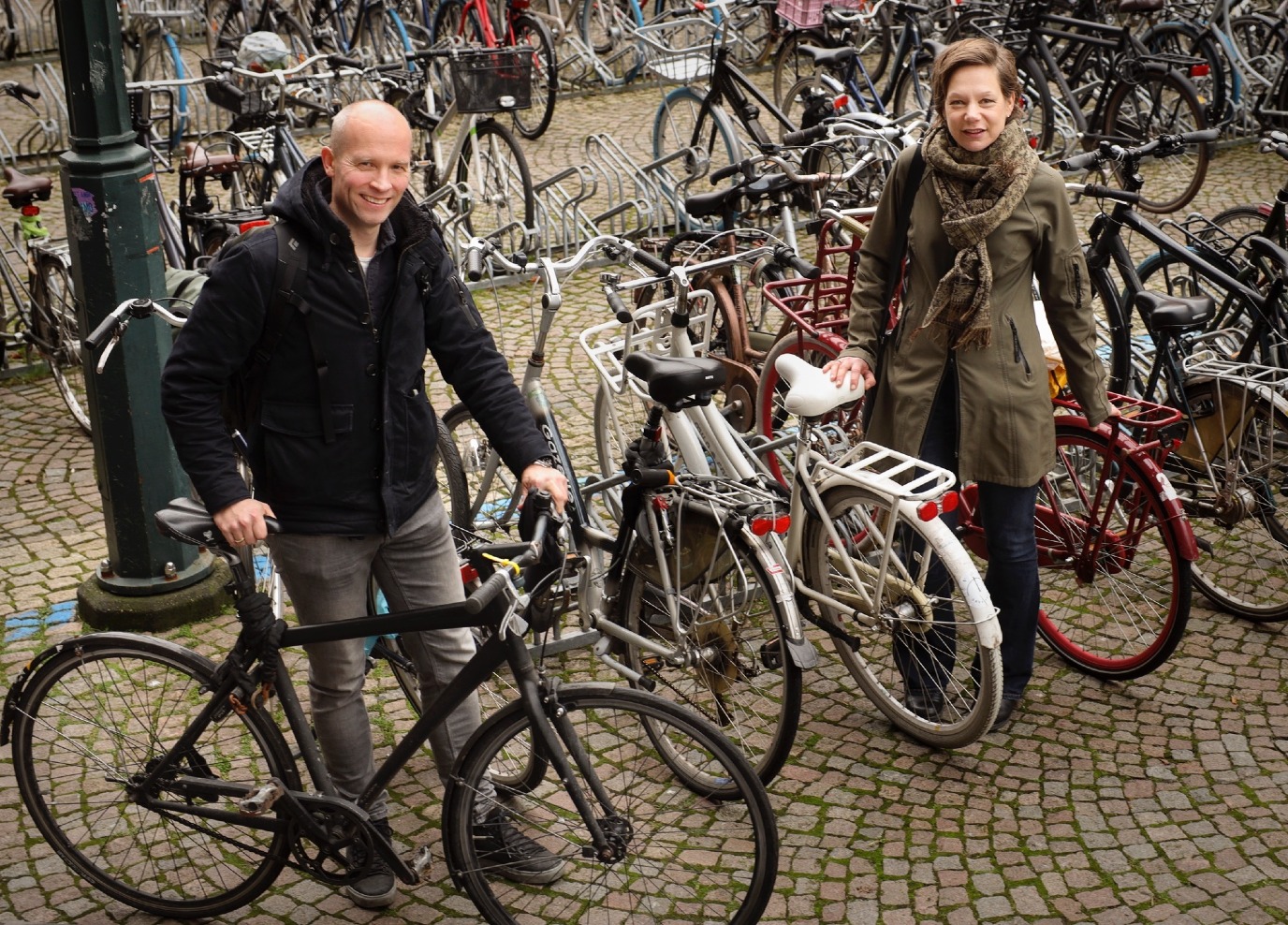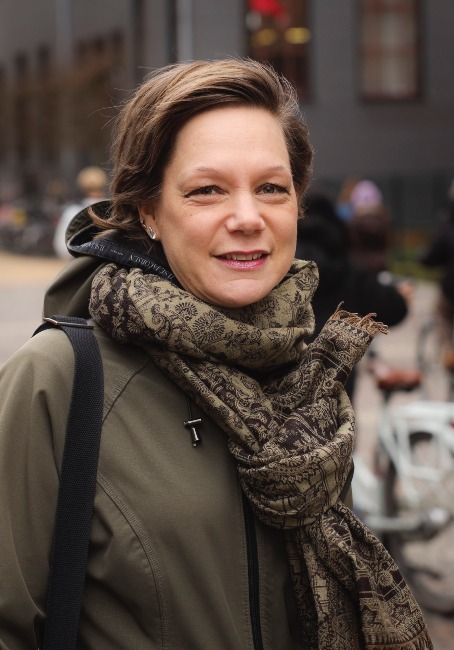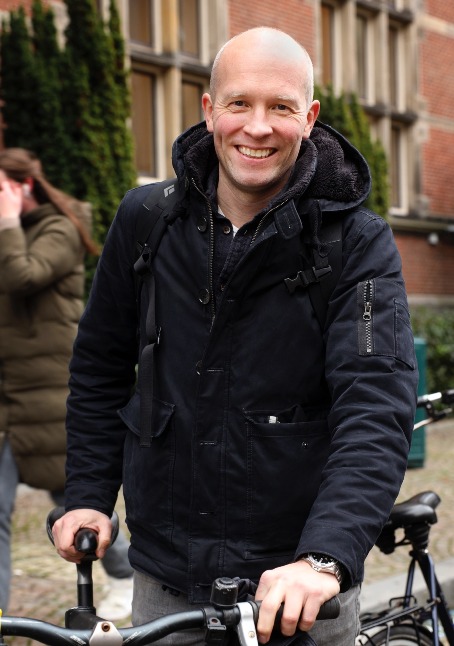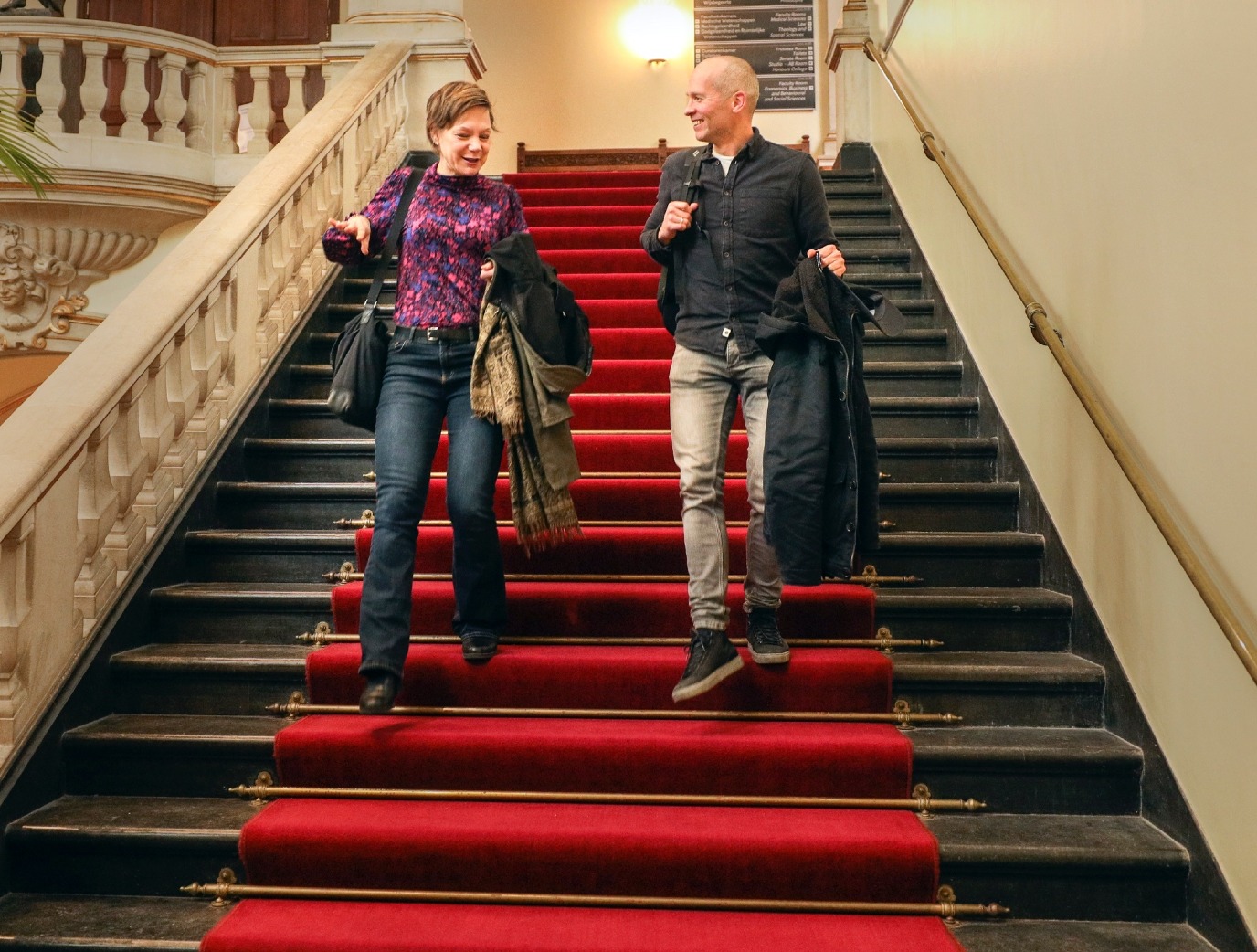Space for your disability
When it comes to collaborations between researchers from different faculties, the UG is at the top of its game. A prime example is the Disabled City project that researches how the mobility of people with a physical disability can be explored through obstacles and opportunities in the urban environment. This could include people with a spinal cord injury, amputation, or foot drop. This project impacts how we look at individual mobility, but also how spaces, and public spaces in particular, can be set up to be inclusive and hospitable to people with a mobility disability. By looking at such a problem from various perspectives, new points of view and solutions can be found.
Text: Jaap Ploeger, Corporate Communication / Photos: Henk Veenstra
Within the M20 programme of the Ubbo Emmius Fund, the Aletta Jacobs School of Public Health has made it possible for the UMCG and the Faculty of Spatial Sciences to work on this multidisciplinary project together. Together, health geographer Louise Meijering, spatial planner Ward Rauws, movement scientist Riemer Vegter, and rehabilitation expert Juha Hijmans supervise a PhD student in this project that wants to venture off the beaten track. Meijering and Vegter talk about their experience with this multidisciplinary collaboration.

Bringing perspectives together
The idea for the multidisciplinary project was born during an informal meeting of the Young Academy Groningen. ‘I was talking to Ward Rauws at the drinks reception,’ Riemer Vegter says. ‘I had just given a presentation on mobility in wheelchair users. I look at what opportunities I can offer the individual to move as optimally as possible with a disability. Ward said that he looked at the set-up of the living environment and what that’s like for people with a disability.
“Wouldn’t it make sense to bring these two perspectives together?” he suggested. And the rest is history.’ The project was shaped further by adding Louise and Juha to the team, and together, they wrote the research plan. After approval, they found a suitable PhD student: Dorien de Jong. She will be identifying the mismatch between the individual freedom of movement of someone with a disability on the one hand, and the set-up of the living environment on the other. With this method, the researchers hope they can come up with innovative points of view and possible solutions to this mismatch.

From their own fields
Academics mainly look at a problem from the perspective of their own field. Vegter: ‘As a movement scientist, I look at the individual physiology and biomechanics of the human being. How does an arm move, or a leg? I look at how many and which forces are required.’ Fellow researcher Juha Hijmans already looks in more depth at possible environmental factors in combination with the disability during the rehabilitation process. ‘Juha and Dorien brought forward a case in which the researchers explored how a person should move around his car to get his wheelchair in the car and subsequently get in themselves on the other side. You already link the movement to the purpose within a particular environment a lot more at that point.’
As a geographer, Louise Meijering looks at the bigger picture: ’Ward Rauws and I want to know what it’s like for people with a disability to move around in their home and in their immediate living environment. But also: why does someone want to go somewhere? Which mode of transportation do they use and what are their intentions? What are the consequences of those choices? A location could also be inaccessible or have a stigma attached to it because you always have to enter through the side entrance. That goes beyond whether someone is able to move purely in a physical sense.’

Learning from each other
The researchers see it as a gift that they have the chance to work together. Not just the topic but also the interest for each other’s work makes the collaboration enjoyable. Vegter: ‘All four of us are experts in our own fields, but this collaboration gives us an opportunity to learn something again. That doesn’t happen often anymore. I really feel that I get to refresh my perspective again now. You are also forced to explain why you do things certain ways.’ Meijering adds: ‘For example, mobility is a central concept to our research, but that does mean that you need to be aware of what the others mean coming from their backgrounds when they talk about mobility. You are able to find better solutions because you combine those different perspectives. And that also allows me to grow again as a scientist.’
Because the PhD student is looking at the problem from different angles, the project also includes perspectives that are not obvious to everyone. Vegter says with a smile: ‘At one point, Dorien said to me that freedom of choice was also an important central concept. I don’t normally focus on that in my research. As a movement scientist, your main priority is to enable someone to use their movement potential to the fullest, for example by exercising in a smart way or improving their resources for a healthy, active lifestyle. But at that point I’m not thinking about why someone does or doesn’t want to do something. Dorien gave me a stern look and said: “Surely, someone can decide for themselves whether they will exercise more?”’

Academic innovation and impact
When the thesis is finished in four years' time, the fields will have a new theoretical framework to work with. Vegter: ‘It also fits in with the policies of the UMCG, the UG, and the Aletta Jacobs School of Public Health, which the project falls under, to create more societal impact in the region. The medical field is therefore looking beyond hospital walls. That is academic innovation.’
The outcomes of this project could also be useful to policy-makers in the spatial domain. Meijering: ‘The people setting up a space do that from their own perception and experience, and they usually don’t have a physical disability.’ Vegter seconds that: ‘They also sometimes lack the knowledge of what the true barriers are. Does accessibility in the environment come down to a kerb or a revolving door, or are completely different matters important to making a person with a physical disability feel welcome or unwelcome?’
Meijering concludes: ‘It’s also about inclusion and being able to participate in society. A disability could happen to everyone and is troubling enough as it is. It would be great therefore if the space is set up in such a way that you can also make optimal use of it with a disability.’
More information
| Last modified: | 11 February 2025 08.57 a.m. |
More news
-
28 May 2025
Gaan avondmensen cognitief sneller achteruit dan ochtendmensen?
Wie ’s avonds opleeft en laat naar bed gaat, heeft een grotere kans op cognitieve achteruitgang dan een ochtendmens, blijkt uit UMCG-onderzoek.
-
27 May 2025
An adventure in the brain
In the exhibition Brainstorm in the University Mueseum, Iris Sommer and two other brain researchers from Groningen explain the gut-brain connection, how it was discovered that the brain does what it does, and how games motivate you to perform...
-
08 May 2025
KNAW appoints three professors of UG/UMCG as new members
Professors Jingyuan Fu, Lisa Herzog, and Helga de Valk of the UG have been appointed members by the Royal Netherlands Academy of Arts and Sciences (KNAW).
